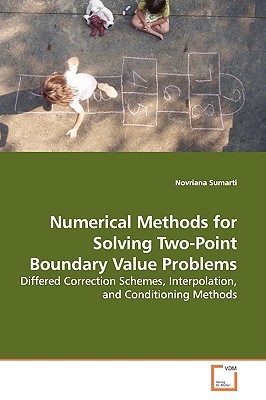
- We will send in 10–14 business days.
- Author: Novriana Sumarti
- Publisher: VDM Verlag
- ISBN-10: 3639137876
- ISBN-13: 9783639137873
- Format: 15.2 x 22.9 x 1.2 cm, softcover
- Language: English
- SAVE -10% with code: EXTRA
Numerical Methods for Solving Two-Point Boundary Value Problems (e-book) (used book) | bookbook.eu
Reviews
Description
The numerical approximation of solutions of ordinary differential equations played an important role in Numerical Analysis and still continues to be an active field of research. In this book we are mainly concerned with the numerical solution of the first-order system of nonlinear two-point boundary value problems. We will focus on the problem of solving singular perturbation problems since this has for many years been a source of difficulty to applied mathematicians, engineers and numerical analysts alike. Firstly, we consider deferred correction schemes based on Mono-Implicit Runge-Kutta (MIRK) and Lobatto formulae. As is to be expected, the scheme based on Lobatto formulae, which are implicit, is more stable than the scheme based on MIRK formulae which are explicit. Secondly, we construct high order interpolants to provide the continuous extension of the discrete solution. It will consider the construction of both explicit and implicit interpolants. The estimation of conditioning numbers is also discussed and used to develop mesh selection algorithms which will be appropriate for solving stiff linear and nonlinear boundary value problems.
EXTRA 10 % discount with code: EXTRA
The promotion ends in 16d.17:23:25
The discount code is valid when purchasing from 10 €. Discounts do not stack.
- Author: Novriana Sumarti
- Publisher: VDM Verlag
- ISBN-10: 3639137876
- ISBN-13: 9783639137873
- Format: 15.2 x 22.9 x 1.2 cm, softcover
- Language: English English
The numerical approximation of solutions of ordinary differential equations played an important role in Numerical Analysis and still continues to be an active field of research. In this book we are mainly concerned with the numerical solution of the first-order system of nonlinear two-point boundary value problems. We will focus on the problem of solving singular perturbation problems since this has for many years been a source of difficulty to applied mathematicians, engineers and numerical analysts alike. Firstly, we consider deferred correction schemes based on Mono-Implicit Runge-Kutta (MIRK) and Lobatto formulae. As is to be expected, the scheme based on Lobatto formulae, which are implicit, is more stable than the scheme based on MIRK formulae which are explicit. Secondly, we construct high order interpolants to provide the continuous extension of the discrete solution. It will consider the construction of both explicit and implicit interpolants. The estimation of conditioning numbers is also discussed and used to develop mesh selection algorithms which will be appropriate for solving stiff linear and nonlinear boundary value problems.


Reviews